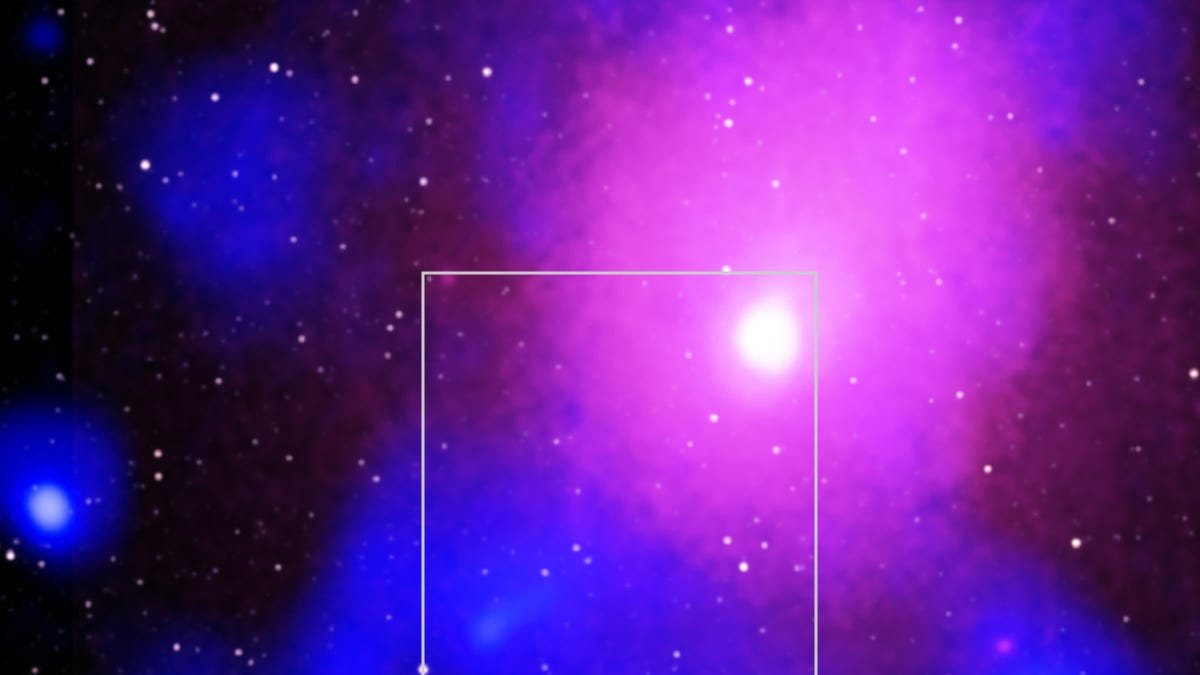Biggest cosmic explosion since the Big Bang spotted in distant galaxy
No, it's not Betelgeuse. Sorry.

A composite image of the gargantuan eruption -- the biggest since the Big Bang.
An immense explosion -- the biggest the universe has experienced since the Big Bang some 14 billion years ago -- has been spotted by an international collaboration of astronomers and researchers combining data from powerful space-based and ground-based telescopes.
Discovered in the Ophiuchus galaxy cluster, around 390 million light-years away, the unprecedented eruption required about five times more energy than the previous record holder. At the heart of the galaxy cluster -- which itself contains thousands of galaxies, streams of gas and clumps of dark matter -- is a supermassive black hole. Researchers believe the big, hungry beast vomited a ton of matter and energy into space, which was then picked up by observatories in space and on Earth.
"We've seen outbursts in the centers of galaxies before but this one is really, really massive," said Melanie Johnston-Hollitt, an astronomer at the International Centre for Radio Astronomy Research in Western Australia and co-author on the paper.
The discovery, published in The Astrophysical Journal on Friday, combined X-ray data from NASA's Chandra X-ray observatory and the European Space Agency's XMM-Newton observatory with radio data from the Murchison Widefield Array in Western Australia and India's Giant Metrewave Radio Telescope. By studying the galaxy cluster in different wavelengths, the team was able to formulate a theory on the explosion that occurred within.
In 2016, a study published in the Monthly Notices of the Royal Astronomical Society used Chandra data to show "an unusual curved edge" in the X-ray image of Ophiuchus. They suggested there was a huge cavity of hot gas that was created -- but discounted the possibility of an explosion.
The latest radio data seems to tell a different story.
Studying the emissions, the team found the signal "fit inside the X-rays like a hand in a glove," said Maxim Markevitch, a co-author on the study and researcher at NASA's Goddard Space Flight Center.
The researchers didn't actually see the explosion happening in real time, however, and sadly, the explosion is over. Instead, the team compared it to finding fossils in the cosmos. Basically, the explosion is like a dinosaur, and the astronomers used giant radio telescopes to dust it off and pull it out of the ground.
"Having the combined information from X-ray and radio telescopes has revealed this extraordinary source, but more data will be needed to answer the many remaining questions this object poses," said Johnston-Hollitt, in a press release.
Astronomers have been captivated recently by a nearby giant star known as Betelgeuse. The star had been dimming for weeks on end, leading some to believe we might get to see it explode, but in recent days it appears to have pressed pause on the dimming. With Betelgeuse's demise on hold, astronomers can get excited about this fossil explosion instead, as a treat.

